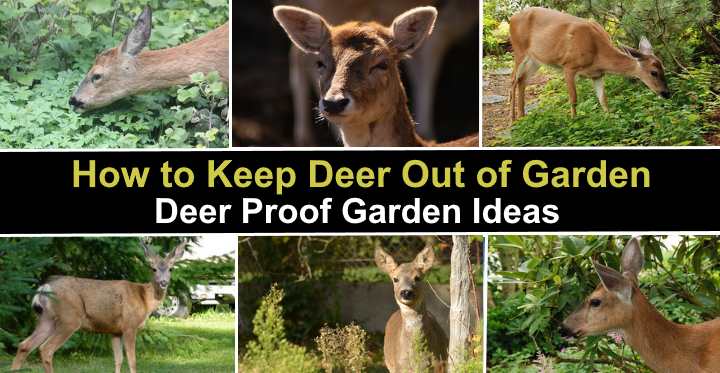To preserve your ornamental plants, flowers, shrubs, trees, and grass, it is important to know how to keep deer out of your garden. Deer may be lovely animals in the wild, but they can wreak havoc on gardens if not contained. It is crucial to employ a variety of deterrent measures in order to create a deer-resistant garden. To help keep deer away from your garden, you’ll need a combination of repellents, deer-proof plants, and a fence.
For many gardeners, white-tailed deer and mule deer are becoming a problem. The native habitat for deer is destroyed as towns and cities grow. Deer can also be attracted to gardens by a lack of food. Unfortunately, some of the most stunning landscape plants are on the menu for these hungry hoofed animals.
Easily digestible plants attract deer. Young tender leaves, fresh grasses, fruit, and new woody development on shrubs and trees are all delicious deer nibbles. Deer, on the other hand, generally avoid aromatic, fibrous, and poisonous plants. As a result, it’s recommended not to grow any plants that deer like to eat. This is a primer on how to keep deer out of your garden by knowing what to do. You may create a deer-proof garden by using ideas about repellents, fencing, and plants that deer dislike.
Deer Proof Garden Ideas

To keep deer out of your yard, use a combination of preventative measures. First, preventing deer from eating foliage can be done by growing deer-resistant plants and spraying homemade repellent. Strong-smelling flowers also have a deer-repelling effect, in addition to other effects. Ultimately, deer fences or netting may be required to keep your garden and plants safe.
When attempting to keep deer out of your yard, it’s best to be realistic about the techniques in order to avoid disappointment. When there isn’t enough food, researchers claim that no plant is 100 percent deer-resistant. If deer are hungry or want to feed their young, they’ll eat anything.
Many plants, on the other hand, will deter deer from coming to your yard because of their pungent scents. In addition, some home remedies to keep away deer may be effective in certain regions.
Deer Proof Garden by Planting Deer Resistant Plants
Growing plants that deer don’t like is a cost-effective way of deterring deer from your garden. In order to discover effective deer repellent plants for your region, you may sometimes employ a “trial and error” approach. Deer don’t like plants with rough or fuzzy leaves, bitter plants, or fibrous plants in general.
You must avoid plants that attract deer if you have a problem with deer in your neighborhood. Deer adore eating on hosta, daylilies, petunias, impatiens, Japanese maples, some evergreen shrubs, roses, and herbaceous plants, according to the Michigan State University. In a deer-proof garden, you can grow a variety of flowering perennials and annuals.
Plants with fuzzy leaves deter deer from eating them

Due to its hairy or hairy leaves, Lamb’s ear is a deer repellent plant. Grow plants with fuzzy foliage to keep your flower bed from becoming a snack bar for deer. Lamb’s ear (Stachys byzantina), tuberous begonias (Begonia × tuberhybrida), yarrow (Achillea), lady’s mantle (Alchemilla), and heliotrope (Heliotropium) are some of the plants that might be used.
Grow prickly plants to keep deer away

Plants with thorns, spines, spikes, and jaggy leaves are another excellent way to deter deer from eating them. The following plants may help to keep your garden free of deer salad:
- Holly (Ilex)
- Bear’s breeches (Acanthus)
- Globe thistle (Echinops)
- Barberry (Berberis)
Plant deer-proof plants that have toxic foliage

Shrub, bulbous plants, and decorative perennials with poisonous leaves are all poisonous and deer resistant. Deer quickly learn which plant leaves make them sick to their stomachs. Monkshood (Aconitum), foxglove (Digitalis), lupin (Lupinus), poppies, dusty miller (Artemisia stelleriana), and larkspur (Delphinium) are all flowers that deer avoid.
Deer rarely eat plants with leathery or fibrous foliage

Deer prefer eating viburnum bushes, yet they choose the youngest, most nutritious leaves. As a result, they avoid foliage with a leathery look or fibrous appearance. Wax begonias, elephant ears (Alocasia and Colocasia), most iris species, and certain viburnum shrubs are among the plants that deer avoid.
Keep Deer Out of Garden Using Deer Repellent Plants
Unfortunately, there are no completely deer-proof plants. Deer, on the other hand, avoid many types of plants if there are plenty of other delicious options available. Deer hate the odors that certain plants emit. Deer avoid many fragrant bushes and flowering plants unless food is scarce.
Plants with strong scents help repel deer

(Clockwise from top left) Marigolds, verbena, butterfly bush, catmint, peony, and bee balm are all plants with strong scents that repel deer. The following are types of strong-smelling plants that deer will only eat as a last resort:
- Marigolds (Tagetes)
- Verbena
- Bee balm (Monarda)
- Peonies (Paeonia)
- Black cohosh (Actaea racemosa)
- Butterfly bush (Buddleja)
- Russian sage (Salvia yangii)
- Boxwood shrubs (Buxus)
- Catmint (Nepeta)
Herbaceous plants are also not particularly appealing to deer. Oregano, lavender, sage, and thyme are some of the best herbs for a deer-resistant garden. Because of their flavor, many spring bulbs are avoided by deer. Autumn crocus, daffodil, and allium are some of the flowering deer-repelling bulbs. However, avoid planting tulips if deer are pests in your yards.
Keep Deer Out of Garden Using Deer Fence

The only way to avoid deer damage in front and rearyards is to use deer fence, which is an effective method of keeping deer out. Nonetheless, deer can leap 8 feet (2.4 meters) high. As a result, a fence that is at least 10 feet (3 meters) tall should be used to keep deer out of gardens.
Unfortunately, a costly deterrent to deer fencing a property may be erecting a deer fence. A stockade fence may be an excellent method to keep deer out of your yard and safeguard your plants in certain circumstances. It can grow to be six feet (1.6 meters) tall with a stockade fence to keep deer out. Deer prefer to gaze on the opposite side before leaping into your garden, therefore this is why.
A stockade fence, on the other hand, might be more costly than a basic deer-resistant mesh barrier across your land. To keep deer damage to a minimum, here are some less expensive fencing options.
Use electric fence if deer are a menace in gardens
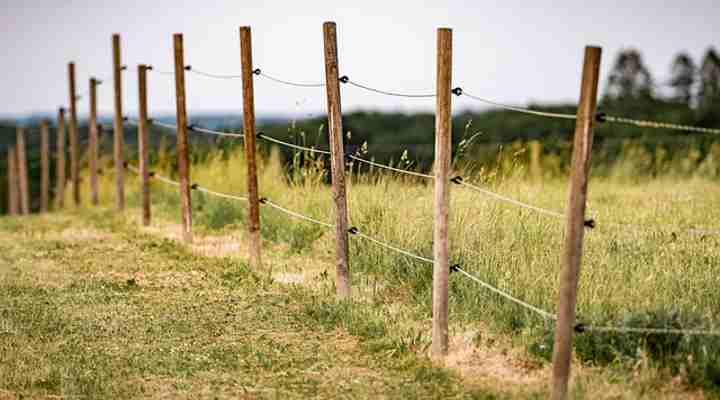
An electric fence is a good deer deterrent, however it may be costly depending on your yard and local zoning rules. When they touch the electrified wires, the deer learn to stay off your property. Installing an electric deer fence can be costly for some property owners.
Bait the fence with peanut butter when installing an electric fence to deer-proof your garden. The deer is drawn to the sweet treat, but it is shocked by it. Deer gradually leave as the sun sets. You’ll have to build a 10-foot (3-m) barrier (otherwise, deer will simply vault it) unless you bait the electric deer barrier.
Wireless electric fences are used as deer repellents by several businesses. Deer are drawn to the fragrant scents of the electronic posts. The little electric shock warns them not to go near your yard.
Protect gardens by growing a living deer-resistant hedge

Boxwood, eastern red cedar, Chinese juniper, and inkberry are some of the best evergreen hedge plants for keeping deer out of gardens. Deer can’t see what’s on the other side because of the dense evergreen foliage. As a result, they are less likely to approach your property for their evening meal.
When it comes to using a live hedge to keep deer out of gardens, there are a few things to keep in mind. To be successful, the privacy screen should be at least 6 feet (1.8 meters) tall. Second, you must keep the hedge in good condition. If there are mouth-watering blooms and shrubs in your garden, deer may squeeze through little openings.
Use deer netting to protect individual plants from deer damage
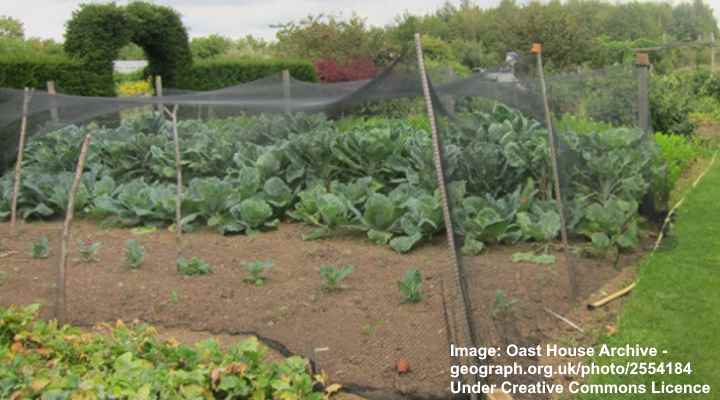
Deer are prevented from eating plants when fencing your vegetable garden with nets. Fencing a whole property with deer-proof mesh may be less expensive and more successful. Keeping shrubs under netting protects them from deer damage by keeping them under the netting constantly. It also means that deer-resistant garden plants don’t need to be protected.
Deer Proof Garden by Using Deer Repellents
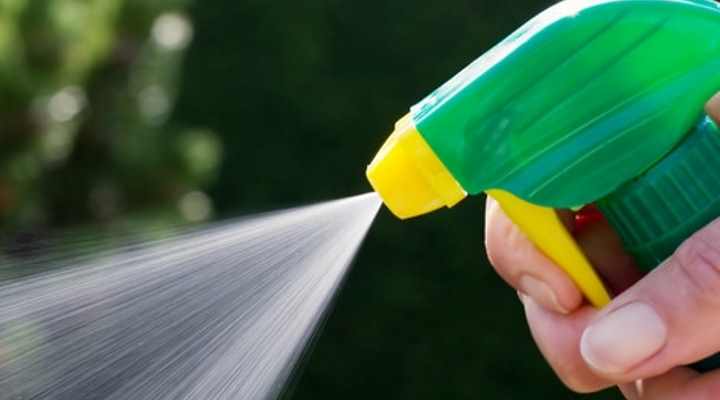
if you utilize them properly, Deer repelling sprays may help protect your plants from being eaten by deer. Yet, in order to avoid deer from chewing through your prized ornamental plants, repellant sprays must be administered at least weekly and after rain. In addition, pungent odors and flavors are desirable characteristics of effective deer repellents for garden plants.
From autumn through early spring, apply deer repellent to plants. Deer are most often found in gardens at this time of year. Plant deterrents help keep deer from returning to your yard by being used before they begin feeding. Rotten eggs, dried blood, stinky soap, and garlic are all effective deer repellents.
Commercial Deer Repellents to Protect Garden Plants
Deer damage in gardens may be reduced using a variety of commercially available deer deterrents. Egg-based repellents were shown to be the most successful at keeping deer away from plants in one research. When chili, unpleasant-tasting chemicals, and soaps are applied to plants, they may cause aversion in deer.
Fears, aversions, tastes, and pain are the four principles that work against deer prevention. Bobbex and Hinder are two of the best deer repellent brands, according to the study. Researchers, however, discovered that 100% of foliage damage can be prevented by no repellent. In addition, when applying sprays to deter deer, it’s critical to follow the manufacturer’s instructions.
DIY Natural Deer Repellent for Deer-Proof Gardens
To safeguard decorative shrubs, flowers, ground cover plants, and bushes, you can also make your own natural deer repellent. Every homemade deer repellent should utilize the same scientific principals as commercial repellents, which is to make a unpleasant-tasting spray to spray on plants.
Deer repellent recipe:
You’ll need eight habanero peppers, a half cup of water, and 2 tbsp. of catnip to make a homemade deer repellent. 6 tbsp of natural yogurt and vegetable oil. Blend the chili peppers in water and strain them through a cheesecloth for the next step. Add the pungent liquid to the oil and yogurt mixture.
Lastly, in a spray bottle, mix one part of homemade solution with ten parts water. Use the deer spray on your garden plants every week to protect them from deer damage. After you’ve received rain, reapply.
Other Repelling Methods to Help Keep Deer Out of Gardens
There are a variety of ways to keep deer from seeing your garden as an unlimited buffet. Some techniques are more effective than others. Certain techniques may work for a while, such as using pungent odors or frightening tactics. Deer, on the other hand, may grow accustomed to your tactics and begin ignoring them. You may try one or more of the following strategies to keep deer at bay:
Scented deer repellents

Some gardeners claim that using Irish Spring soap puts deer off. Deer appear to be put off by it, despite the fact that it is a pleasant smell for most people. Try sprinkling the soap around your garden after grating it. Hanging soap cubes on tree limbs has been suggested by others. To help keep deer away, you’ll have to spray the plants.
Rabbits and deer are said to be frightened by human hair. Hair clipping or small bags of human hair are not proven to be a deer deterrent. You may request clippings from a hairdresser if you’re sure that it’ll work in your region.
Visual or auditory deer repellents
Deer may be startled and flee if wind chimes or a string of CDs are hung from trees. Deer will get used to these methods and ignore them, even if they may initially work. Solar-powered deer deterrent LED lights are advertised online by some vendors. Deer don’t get habituated to the red LEDs, which mimic a predator’s eyes and flicker in random patterns. Deer work at night, when the four-legged garden pests do the most garden damage, which is one of these light deterrent benefits.
Keep Deer Out of Garden by Scaring Them
Deer are animals that are prone to being frightened. So that the deer leave your garden, there are a variety of methods to frighten them. Scare deer away from your property in a variety of ways:
Motion-activated sprinklers can scare deer
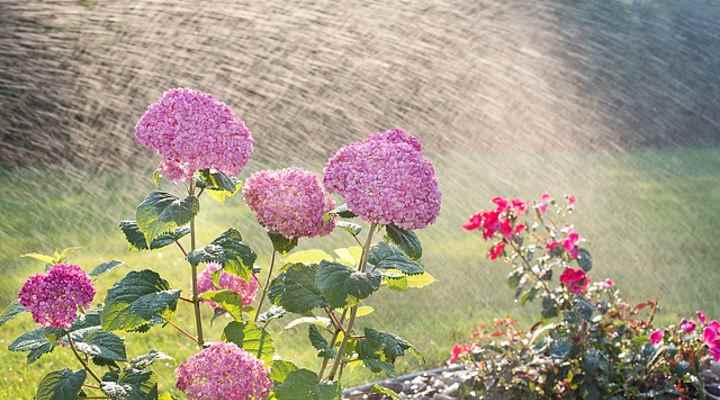
Sprinklers that activate when they detect movement may help to keep deer and other animals out of your yard. They’re sometimes known as yard enforcers. If anybody approaches, the sprinklers will release a strong stream of water. Yard enforcers operate night and day, using a 120° arc of spray to keep the grass wet.
When deer approach your property, you may place sprinklers in strategic locations to humanely target them if you have a large yard.
A dog can scare off deer

If you have a dog, allowing it to roam the yard may help keep deer away by frightening them away. The smell of a dog may help to deter deer because it attracts wild creatures that enter your land. Deer and other animals, for example, are deterred by dog hair and urine.
Other Ways to Create a Deer-Proof Garden
It’s important to keep an eye on your yard and employ a blend of deterrent and repelling tactics to keep deer away. Here are some more ways to keep deer away from your plants:
Install tree wraps to protect trees from deer damage
Deer stripping or damaging tree bark with their antlers may be prevented by wrapping the trees. To protect a tree, you can install metal mesh, chicken wire, or thick plastic sheeting to keep deer away from the trunk. A few inches from the trunk, install the protective tree wrap.
Use fishing line around flower beds to deter deer
Your ornamental landscaping plants can be protected by creating a physical, virtually invisible barrier around flower beds. To stretch fishing line tight around it, you’ll need stout posts. Keep the fishing line about 2 to 3 feet (0.6–1 meter) off the ground. Make sure that deer can’t lean over and chew plant leaves while the wire is far enough away from your plants.
